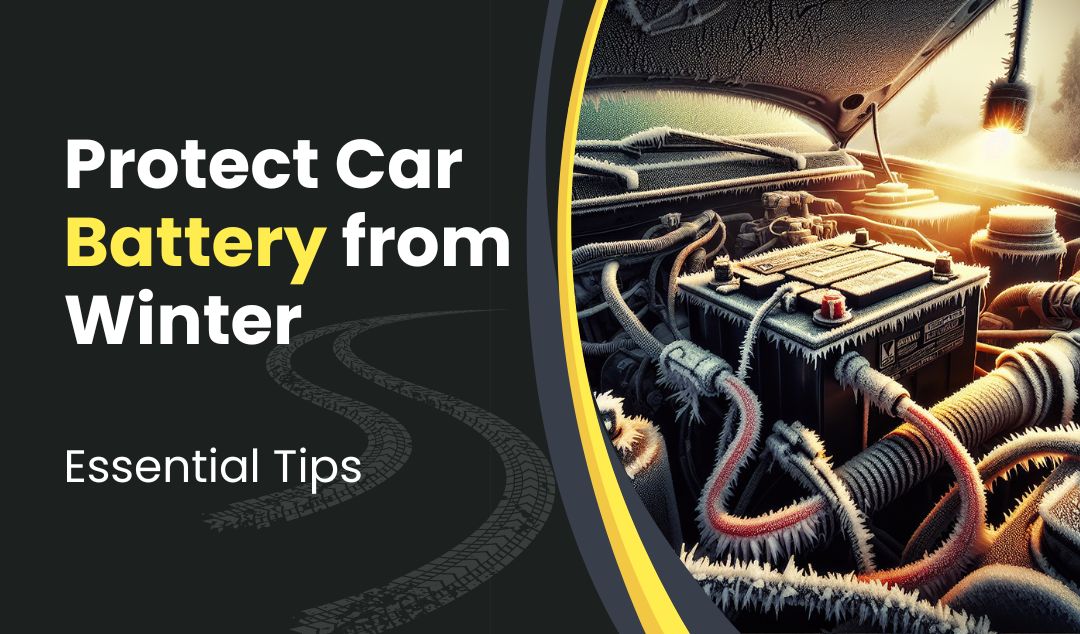How to Keep Car Battery from Dying in Winter: Essential Tips

Winter weather can be tough on cars, especially when it comes to battery health. As temperatures drop, many drivers find themselves wondering how to keep car batteries from dying in cold weather. The frigid conditions can put extra strain on a vehicle’s electrical system, making it crucial for car owners to take preventive measures. Mobile Mechanic Columbia SC services often see a surge in calls during winter months due to battery-related issues.
Cold weather has a significant impact on battery performance, potentially leaving drivers stranded in icy conditions. To avoid such situations, it’s essential to understand the steps one can take to maintain battery health during winter. This article will explore effective strategies to prepare your battery for winter, adjust driving habits for optimal performance, and upgrade your battery if needed. By following these tips, drivers can ensure their vehicles start reliably even in the coldest months of the year.
Quick Battery Replacement service at your location.
Prepare Your Battery for Winter
Install a Battery Blanket
A battery blanket warms the core of the battery 60 to 70 degrees above the ambient temperature. To install, wrap the blanket around the battery and secure it with the provided strap. Route the power cord through the grill or a convenient location under the hood. At day’s end, plug the blanket into an appropriate power source.
Use a Trickle Charger
Trickle chargers maintain a full charge on the battery, preventing freezing in temperatures as low as -76°F. Smart chargers are recommended over old-fashioned “dumb” designs. They operate in phases: bulk, absorption, and float. The float mode keeps the battery at full capacity, ideal for fighting off potential freezing conditions.
Apply Anti-Corrosion Measures
Cleaning battery contacts improves charging efficacy and longevity. Remove corrosion with a mixture of warm water and baking soda, wearing protective gear. Apply petroleum jelly or lithium grease spray to the clean terminals to seal them from air and underhood chemicals. This prevents future corrosion and ensures good electrical contact.
Adjust Your Driving Habits
Limit Short Trips
Short trips can have a negative impact on battery health, especially in cold weather. During brief drives, the alternator may not have sufficient time to recharge the battery fully. This can lead to a partially charged battery, which is more susceptible to cold weather damage. To maintain battery health, drivers should aim to combine errands into longer trips whenever possible. This allows the battery to receive a full charge and helps evaporate contaminants from the engine oil.
Reduce Power Drain on Startup
To minimize strain on the battery during cold starts, drivers should turn off non-essential accessories before starting the vehicle. This includes the radio, air conditioning, and headlights. By reducing the initial power draw, the battery can focus its energy on starting the engine. Once the engine is running, these accessories can be turned on as needed. This practice is particularly important for Battery Replacement considerations in older vehicles.
Drive Regularly to Maintain Charge
Regular driving is crucial to maintain battery charge, especially in winter. Letting a vehicle sit idle for extended periods can lead to battery self-discharge. If possible, drivers should take their cars for a 20-30 minute drive at highway speeds at least once a week. This helps ensure the battery receives a full charge and prevents the buildup of harmful engine contaminants. For those unable to drive regularly, using a battery maintainer can help combat self-discharge and preserve battery health.
Quick Battery Replacement service at your location.
Upgrade Your Battery for Better Winter Performance
Consider an AGM Battery
AGM batteries offer superior performance in cold weather. They have a higher cold cranking amps (CCA) rating and a low self-discharge rate, making them ideal for winter use. AGM batteries can function well below freezing and are maintenance-free, making them a reliable choice for RVs, boats, and cars in colder climates.
Choose the Right Cold Cranking Amps
Cold cranking amps (CCA) measure a battery’s ability to start a vehicle in cold temperatures. The CCA rating should match the engine size, with at least one CCA per cubic inch of engine displacement (two for diesel engines). Larger vehicles require 400-500 CCAs, while smaller cars may need only 150 CCAs. In areas with sub-zero temperatures, a higher CCA rating is crucial for reliable starts.
Proper Installation Tips
When installing a new battery, clean the terminals to remove corrosion. Use a mixture of baking soda and water, then apply petroleum jelly to prevent future corrosion. Ensure the battery is fully charged before installation. For those in consistently cold areas, consider installing a block heater to reduce strain on the battery during cold starts.
Conclusion
Keeping your car battery in top shape during winter is crucial to avoid unexpected breakdowns. By implementing strategies like using battery blankets, trickle chargers, and maintaining proper driving habits, you can significantly improve your battery’s performance in cold weather. Mobile Mechanic Columbia SC services can provide additional support and advice to ensure your vehicle remains reliable throughout the winter months.
Upgrading to a more cold-resistant battery, such as an AGM model with appropriate CCA ratings, can make a big difference in your car’s winter performance. Regular maintenance, including cleaning terminals and checking charge levels, is key to extending battery life. Remember, a well-maintained battery not only prevents frustrating no-start situations but also reduces the need for premature Battery Replacement, saving you time and money in the long run.
Quick Battery Replacement service at your location.
FAQs
1. How can I prevent my car battery from dying during the cold winter months?
To ensure your car battery remains functional throughout the winter, it’s crucial to keep it fully charged. Regular driving and the use of a trickle charger, when needed, can help maintain the battery’s charge.
2. What are some effective strategies to extend battery life in cold weather?
To extend battery life in cold conditions, follow these tips:
- Keep electronic devices away from cold temperatures as much as possible.
- Always have a charger ready for use.
- Carry spare batteries.
- Check the current capacity of your batteries regularly.
- Consider switching to alternative devices better suited for cold environments.
3. How frequently should I start my car in winter to ensure the battery stays charged?
During winter, aim to drive your car for at least 20 minutes on at least two occasions per week. This duration is sufficient to charge the battery adequately, as idling does not allow the alternator to charge the battery as effectively as when the car is in motion.
4. What measures can I take to prevent my car battery from dying when the car is not in use?
To protect your car battery when not in regular use, consider the following:
- Employ a trickle charger or a battery conditioner to maintain charge levels.
- Avoid starting the car only to turn it off shortly after.
- Steer clear of very short trips that don’t allow the battery to charge fully.
- Ensure to drive your car for 15-20 minutes at a time to adequately charge the battery.
- If available, rotate the use of multiple vehicles within your household to balance battery usage.





